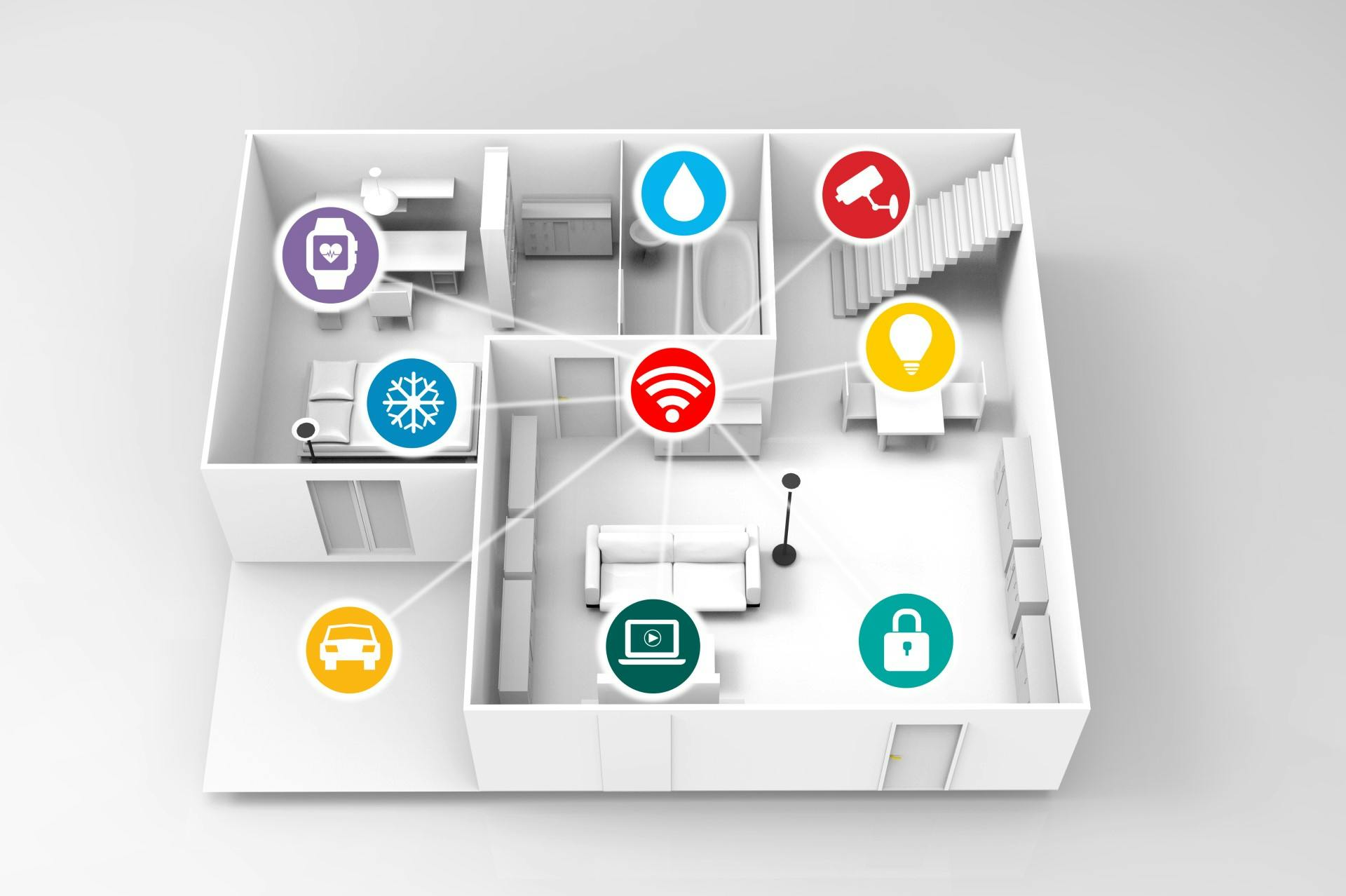As an avid technology enthusiast, I have always been fascinated by the idea of having a smart home. Being able to control various aspects of your home with just a few taps on your smartphone is a dream come true for many people.
In this article, I will provide you with a comprehensive guide to smart home protocols, including what they are, how they work, and why they are important.
Introduction to Smart Home Technology
Smart home technology refers to a collection of devices and appliances that are connected to the internet, allowing them to be controlled remotely. These devices can range from thermostats and light bulbs to security cameras and door locks.
The main advantage of smart home technology is that it enables homeowners to automate various aspects of their homes, making them more convenient, energy-efficient, and secure.
Smart home technology has come a long way since the early days when it was limited to basic lighting and temperature controls. Today, smart home devices are more advanced and offer a wide range of features that make them more useful and versatile.
However, as the number of devices in a smart home increases, so does the complexity of managing them. This is where smart home protocols come in.
Understanding Smart Home Protocols
Smart home protocols are the communication standards that smart home devices use to communicate with each other and with the internet. T
hese protocols define how data is transferred between devices, what kind of data can be transferred, and how the devices are authenticated and authorized to communicate with each other.
There are several smart home protocols available today, each with its own strengths and weaknesses.
Some of the most popular smart home protocols include Zigbee, Z-wave, Wi-Fi, Bluetooth, and Matter. Each protocol has its own unique features and benefits, which we will explore in more detail later in this article.
Why Smart Home Protocols are Important
Smart home protocols are important because they enable smart home devices to communicate with each other seamlessly. Without a common protocol, different devices would not be able to communicate with each other, which would make it impossible to create a smart home ecosystem.
Smart home protocols also ensure that smart home devices are secure and reliable. They define how devices are authenticated and authorized to communicate with each other, which prevents unauthorized access and ensures that data is transmitted securely.
Additionally, smart home protocols ensure that devices are energy-efficient, which is important for reducing energy costs and minimizing the environmental impact of smart home technology.
Zigbee Protocol – What is it and How it Works?
Zigbee is a wireless communication protocol that is designed specifically for low-power, low-data-rate applications. It is an open standard that operates on the IEEE 802.15.4 physical radio specification, which defines how data is transmitted over short distances.
Zigbee uses a mesh network topology, which means that each device in the network can communicate with every other device. This makes Zigbee ideal for smart home applications, where devices are often spread out across a large area.
Zigbee devices are capable of transmitting data up to 100 meters in an unobstructed environment. However, the actual range may be lower depending on the environment and the number of devices in the network.
Z-wave Protocol – What is it and How it Works?
Z-wave is a wireless communication protocol that is designed for low-power, low-data-rate applications. It operates in the sub-gigahertz frequency range, which provides better range and penetration than Wi-Fi and Bluetooth.
Z-wave uses a mesh network topology, which means that each device in the network can communicate with every other device. This makes Z-wave ideal for smart home applications, where devices are often spread out across a large area.
Z-wave devices are capable of transmitting data up to 100 meters in an unobstructed environment. However, the actual range may be lower depending on the environment and the number of devices in the network.
Wi-Fi Protocol – What is it and How it Works?
Wi-Fi is a wireless communication protocol that is designed for high-speed, high-data-rate applications. It operates in the 2.4GHz and 5GHz frequency bands, which provides excellent range and speed.
Wi-Fi uses a star network topology, which means that each device in the network communicates directly with the router. This makes Wi-Fi ideal for applications that require high-speed internet access.
Wi-Fi devices are capable of transmitting data up to 100 meters in an unobstructed environment. However, the actual range may be lower depending on the environment and the number of devices in the network.
Bluetooth Protocol – What is it and How it Works?
Bluetooth is a wireless communication protocol that is designed for short-range, low-power applications. It operates in the 2.4GHz frequency band, which provides good range and penetration.
Bluetooth uses a point-to-point network topology, which means that each device in the network can communicate with only one other device. This makes Bluetooth ideal for applications that require low-power, short-range communication.
Bluetooth devices are capable of transmitting data up to 10 meters in an unobstructed environment. However, the actual range may be lower depending on the environment and the number of devices in the network.
Matter Smart Home Protocol – What is it and How it Works?
Matter is a smart home protocol that was created by the Connectivity Standards Alliance (formerly the Zigbee Alliance). It is an open standard that is designed to make it easy for different smart home devices to communicate with each other.
Matter uses a IP-based network topology, which means that each device in the network has its own unique IP address. This makes Matter ideal for applications that require high-speed, reliable communication.
Matter devices are capable of transmitting data up to 100 meters in an unobstructed environment. However, the actual range may be lower depending on the environment and the number of devices in the network.
Comparison of Smart Home Protocols
Each smart home protocol has its own unique features and benefits. The following table summarizes the main differences between the most popular smart home protocols:
| Protocol | Frequency | Topology | Range | Data Rate | Security |
|---|---|---|---|---|---|
| Zigbee | 2.4GHz | Mesh | Up to 100m | 250kbps | AES-128 |
| Z-wave | 900MHz | Mesh | Up to 100m | 100kbps | AES-128 |
| Wi-Fi | 2.4GHz/5GHz | Star | Up to 100m | Up to 6.9Gbps | WPA2 |
| Bluetooth | 2.4GHz | Point-to-point | Up to 10m | Up to 2Mbps | AES-128 |
| Matter | IP-based | IP-based | Up to 100m | Up to 250kbps | AES-128 |
Choosing the Right Smart Home Protocol for Your Home
When it comes to choosing the right smart home protocol for your home, there are several factors to consider. These include the range of the protocol, the number of devices you plan to use, the data rate required, and the security features of the protocol.
If you plan to use a large number of devices in your smart home, a mesh network topology like Zigbee or Z-wave may be a better choice.
If you need high-speed internet access, Wi-Fi may be the best option.
If you need short-range, low-power communication, Bluetooth may be the way to go.
And if you want a reliable, IP-based protocol that is easy to use, Matter may be the best choice.
Smart Home Devices that Utilize Matter Protocol
Matter is a relatively new smart home protocol, but several devices already support it. Some of the most popular smart home devices that use Matter include the Amazon Echo, Google Nest Hub, and Philips Hue.
Matter is expected to become even more popular in the coming years as more devices are released that support it. This will make it even easier for homeowners to create a smart home ecosystem that is both reliable and easy to use.
Future of Smart Home Protocol
The future of smart home protocols looks bright. As technology continues to advance, we can expect to see even more advanced protocols that offer even better performance, security, and reliability.
One of the most exciting developments in the world of smart home technology is the emergence of voice assistants like Amazon Alexa and Google Assistant. These assistants make it even easier to control your smart home devices using just your voice, which is a major step forward in terms of convenience and ease of use.
Conclusion
Smart home technology is rapidly evolving, and smart home protocols are a critical piece of the puzzle. Whether you choose Zigbee, Z-wave, Wi-Fi, Bluetooth, or Matter, it is important to choose a protocol that meets your specific needs in terms of range, data rate, and security.
As the smart home industry continues to grow, we can expect to see even more advanced technologies and protocols that make it even easier to create a smart home ecosystem that is both convenient and energy-efficient. So, if you haven’t already, it’s time to start thinking about how you can make your home a smart home.
Thanks for reading! If you’re interested in learning more about smart home technology, check out our other articles on the topic. And if you have any questions or comments, feel free to leave them below.
Indholdsfortegnelse





